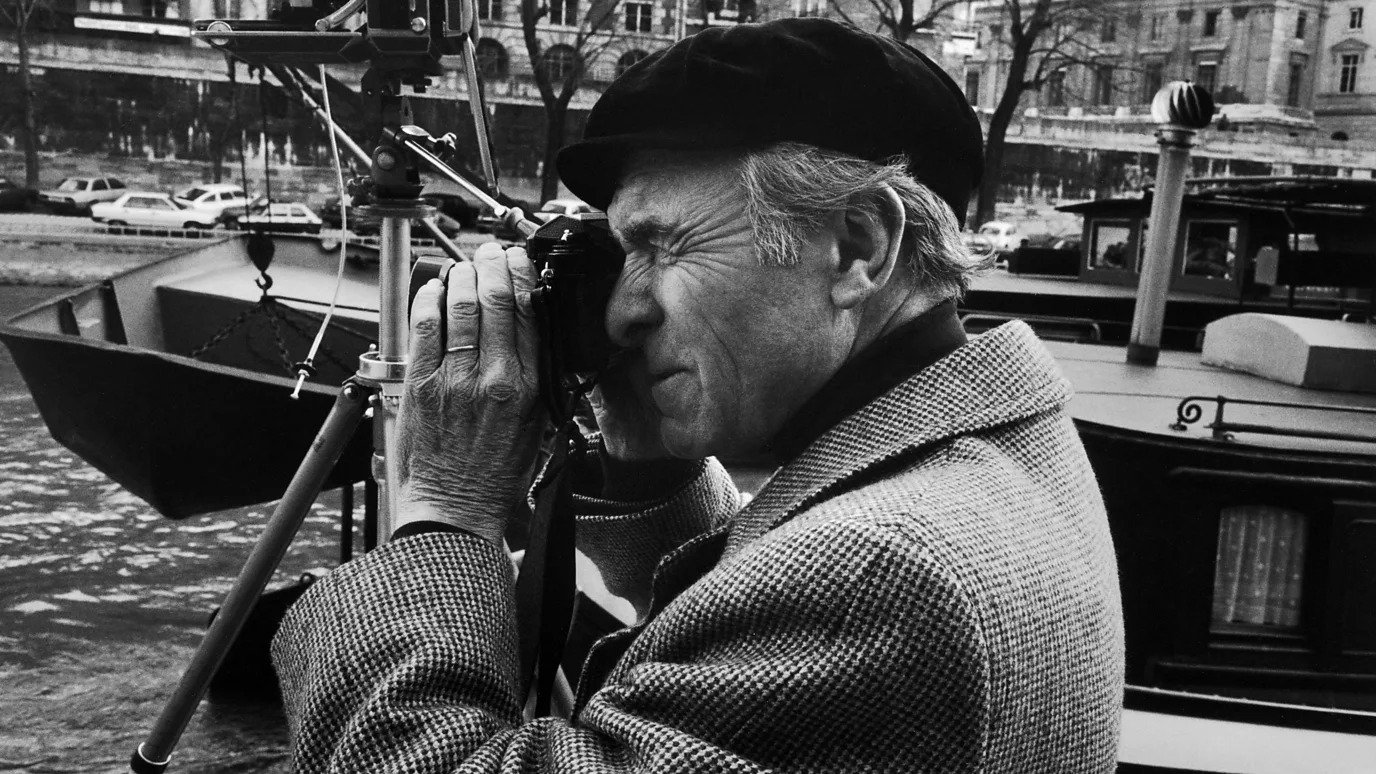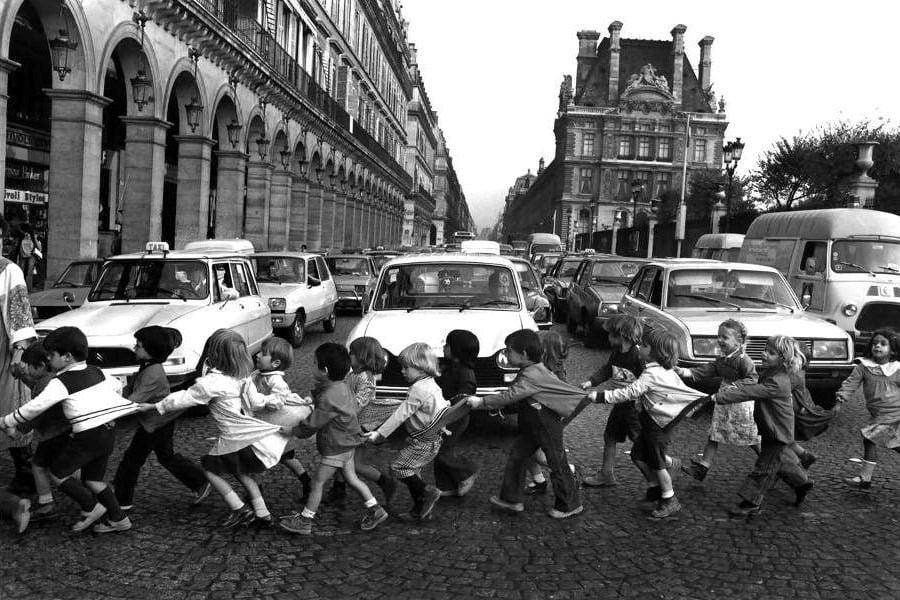The Secret Behind One Of The Most Romantic Photographs In History
Paris, often called the “City of Love,” has long enchanted photographers with its grandeur and timeless beauty. Its charming streets, elegant architecture, and vibrant atmosphere create a perfect backdrop for preserving moments of magic and romance.
Amid thousands of photographs set in Paris, one stands out as an enduring symbol of love and romance—a photograph by Robert Doisneau capturing two people sharing a kiss.
This image, known as “Le Baiser de l’Hôtel de Ville” (The Kiss by the Hôtel de Ville), has become one of the most iconic and beloved photographs of the 20th century. It perfectly encapsulates the essence of Paris, the city of romance.
The making of the iconic photograph

This legendary photograph is currently being showcased at the Martin-Gropius-Bau in Berlin, alongside over a hundred other works by Robert Doisneau.
“People like my photos because they see in them what they would see if they stopped rushing about and took the time to enjoy the city,” Robert Doisneau often said.
His words ring true, but perhaps surprisingly, his most famous photograph, “Le Baiser de l’Hôtel de Ville” (The Kiss by the Hôtel de Ville), was actually staged.
This detail was shared by Francine Deroudille, Doisneau’s daughter and co-curator of the exhibition, in an interview with BBC Culture.

The photograph was taken in the spring of 1950 as part of a series on “the lovers of Paris” that Doisneau’s agent had pitched to American publications. Life magazine commissioned the project, and it was during this time that the iconic image was created.
Back then, image rights were already protected by law, so Robert Doisneau, being cautious, chose to use friends or young actors in his commissioned work to avoid any legal complications.
One afternoon in March 1950, Doisneau took some young actor friends out into the streets of Paris and simply let them be. They walked, held hands, talked, and kissed, all while Doisneau quietly captured these moments.

“His models weren’t models in the traditional sense—they didn’t pose. My father just captured them flirting and kissing in a very natural way,” says Deroudille.
The result was a beautifully captured kiss at the corner of Rue du Renard and Rue de Rivoli, just across from the city’s town hall. It’s a classic Doisneau moment—a fleeting, intimate exchange frozen in time while the bustling life of Paris goes on unnoticed around them.
Indifferent Parisians walk by, cars rush past, and people chat at a café, oblivious to the magic that Doisneau’s lens was preserving.
The timeless appeal of the iconic Paris kiss

When we look at Doisneau’s famous photograph, we are immediately drawn in—the moment feels so real, the young couple’s movement so natural, and the setting of Paris in 1950 adds to its magic.
The question of whether it’s staged or not fades away because the emotions captured are so genuine. The beauty of this spontaneous moment reflects the French spirit and the charm of Paris.
“At the time, American magazines were very keen on Paris stories, especially stories covering life in the Paris streets where people behaved much more freely than anywhere in America. Even in New York’s streets, couples weren’t seen kissing, and certainly never with such carefree abandon,” recalls Francine Deroudille, Doisneau’s daughter.

When the photograph was first published in “Life Magazine,” it was just one of many in Doisneau’s large collection, which now includes 450,000 negatives managed by his daughters, Francine and Annette.
Doisneau himself didn’t think it was an extraordinary picture. “He thought it was well composed but nothing more,” says his daughter.
It wasn’t until 30 years later, in the early 1980s, that a young publisher suggested reissuing the photograph as a poster.
At first, Doisneau was unsure, but the excitement of the younger generation at the Rapho agency where he worked convinced him to give it a try. The success was instant and widespread.

Reflecting on the photograph’s sudden popularity, Doisneau remarked, “We all realized that it represented a perfect fantasy. It encapsulates the world’s view of Paris as the city of love and freedom.”
What started as a simple snapshot of a moment in time had transformed into a global symbol of romance and the spirit of Paris.
A brief about Doisneau, the great photographer

Born on April 14, 1912, in Gentilly, Paris, Doisneau became a pioneer of photojournalism and street photography.
He was famous for capturing the playful, ironic, and often tender moments of Parisian life, showing how different social classes mingled and how everyday people lived.
Influenced by photographers like André Kertész, Eugène Atget, and Henri Cartier-Bresson, Doisneau created over 20 books filled with spontaneous moments from human life.
He believed, “The marvels of daily life are so exciting; no movie director can arrange the unexpected that you find in the street.”

Doisneau’s love for photography started when he was just sixteen, though he was so shy that he began by photographing cobblestones before moving on to children and adults.
After graduating in 1929, he began working professionally with advertising photographer André Vigneau.
By 1930, he was photographing objects and sold his first photo story to “Excelsior” newspaper in 1932.

In 1934, Doisneau started working as Renault’s industrial and advertising photographer. After being fired in 1939, he turned to advertising and postcard photography. That same year, he joined the Rapho photo agency, where he worked until World War II began.
During the war, Doisneau joined the French Resistance, serving as both a soldier and a photographer. He documented the occupation and liberation of Paris and also forged documents for the Resistance.

After the war, he returned to advertising and magazine photography, including working for “French Vogue” from 1948 to 1952. He briefly joined the Alliance photo agency before returning to Rapho in 1946, where he continued capturing the everyday magic of Parisian life.
When he died in 1994, he left behind an incredible legacy—450,000 negatives that beautifully capture everyday life with a keen, observant eye.

